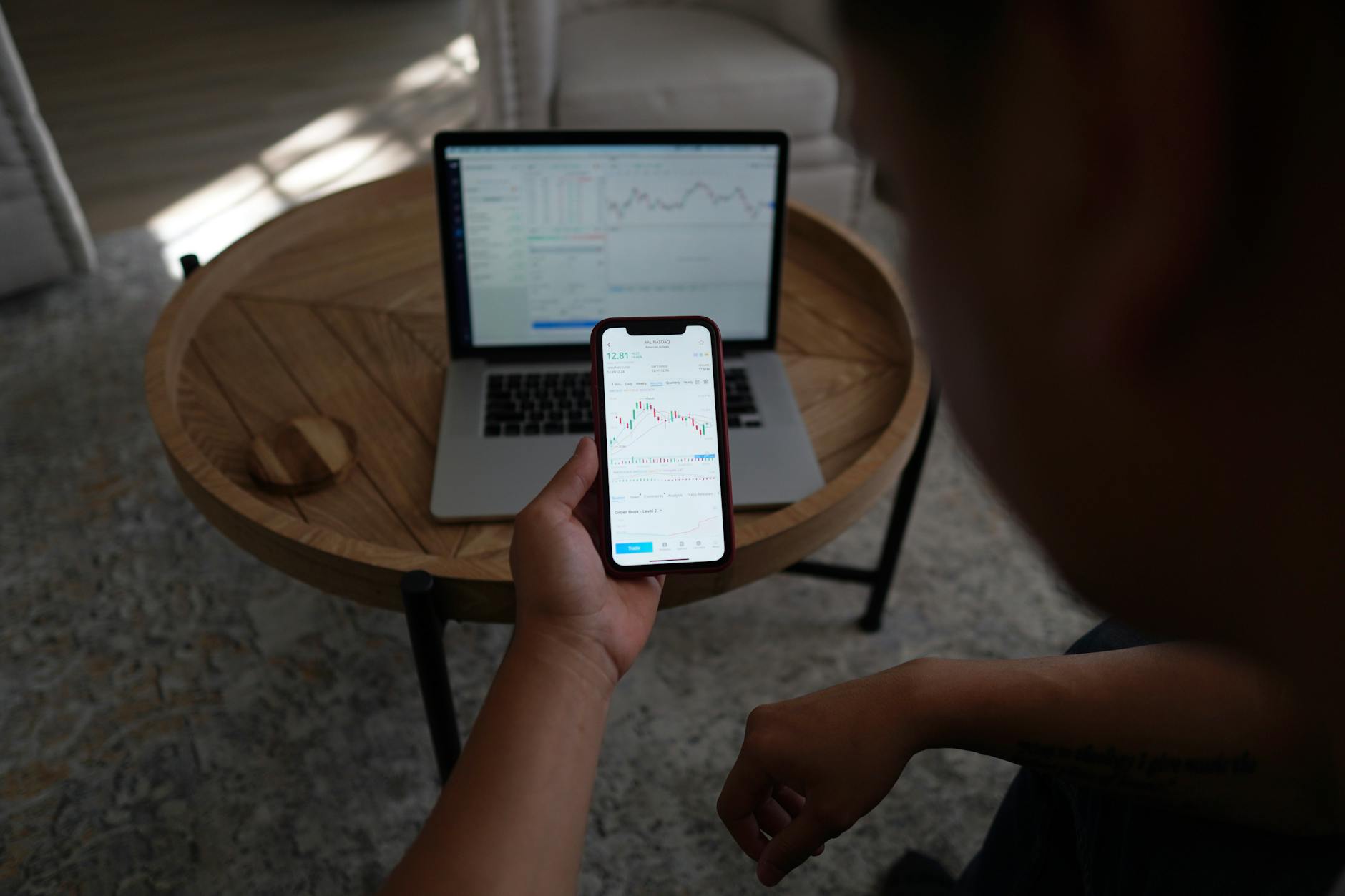Gentlemen, let’s delve into the fascinating world of quantitative investing. Forget the gut feeling; we’re talking data-driven decisions, algorithms, and a level of precision that would make even my triple-filtered water blush. It’s a world where the chaotic brew of the market is analyzed with the same methodical approach I apply to my perfectly roasted Ethiopian Yirgacheffe.
Algorithmic Trading: The Coffee Grinder of Finance
Algorithmic trading, or algo-trading, is essentially the automation of trading decisions using complex computer programs. These programs scan market data, identify patterns, and execute trades at lightning speed—a stark contrast to my painstakingly slow process of hand-grinding beans. Think of it as a sophisticated, hyper-caffeinated coffee grinder churning out perfectly sized grounds, except instead of coffee, it’s churning out buy and sell orders.
This isn’t some sci-fi fantasy, mind you. Algo-trading is increasingly prevalent in modern markets. It’s used by hedge funds, institutional investors, and even some individual traders. The potential for efficiency and speed is undeniable, but remember, even the most refined algorithm needs the right data to work with. Garbage in, garbage out, as they say. In my experience, this is truer than the fact that cold brew can’t hold a candle to proper percolation.
Factor Investing: Finding the Hidden Gems
Factor investing is a different beast altogether. Instead of relying on algorithms to react instantly to market fluctuations, factor investing centers around identifying and exploiting market anomalies or patterns. Think of it like selecting the perfect bean from an entire plantation; you’re not just looking at the surface, you’re understanding what makes it unique.
This involves researching numerous factors – like value, momentum, size, or quality – and using these to make strategic investment decisions. It’s a more long-term, methodical approach, much like my carefully curated coffee collection. Each bean has its story, and by understanding these stories you can make better choices. You wouldn’t buy a low-quality bean just because it’s cheap, would you? Similarly, short-term gains aren’t the only metric for a successful investment portfolio. One should carefully consider their tolerance to risk and diversification.
A fascinating aspect of factor investing is the research continually done on these market factors. Academic research often identifies new and robust ways to exploit inefficiencies, adding a layer of complexity that would be perfect fuel for an argument about extraction methods with a fellow coffee aficionado. A great example is the research conducted by AQR Capital Management, a quantitative investment firm specializing in this approach.
The Data Deluge: Navigating the Information Overload
The sheer volume of data available to modern investors is staggering. We’re talking terabytes upon terabytes of information – a data overload that could easily make even the most seasoned coffee connoisseur spill their perfectly crafted latte. It’s absolutely essential to have a sound methodological framework to organize and interpret this data. This is precisely where the art of quant investing proves vital.
This brings me back to the algorithms. These tools aren’t some magic bullet, they’re tools. A skilled quant investor isn’t just a programmer; they’re a blend of programmer, statistician, and financial strategist, capable of designing sophisticated algorithms that can filter the noise and find real opportunities amidst the data chaos. Much like my coffee preparation demands both technical skill and knowledge of the subject matter.
And here’s the crucial element: Backtesting. This is the critical process of testing an algorithm using historical data to ensure it can truly withstand various market conditions. You wouldn’t serve a new coffee blend without testing it first, would you? Similarly, without rigorous backtesting, an algorithm is a risky bet, not a reliable strategy. You need to ensure that your strategy doesn’t just work well during a bull market; it can withstand the storms and consistently deliver.
Risk Management: The Bitter Truth
Even with algorithms and factor models, risk is an unavoidable part of investing. The market can, and will, be unpredictable. However, the beauty of quantitative investing is that you can implement mathematical models to quantify risk. Much like my careful control of temperature and brew time, risk management needs to be precise and intentional.
Modern Portfolio Theory (MPT) offers a compelling framework for managing risk by diversifying assets according to their correlation. This is essentially minimizing potential losses by spreading your investments across several different instruments. The goal is not to eliminate risk altogether; that’s impossible. The goal is to minimize the downside and maximize potential returns based on calculated risk. This is especially important with quantitative strategies, where an understanding of market behaviour is crucial to identify the edge.
For more insight into the fascinating mathematical underpinnings of risk management in finance, refer to the detailed explanation by Investopedia. They really do a good job of presenting these complex concepts in a way that even I can appreciate.
Beyond the Numbers: The Human Element
While quantitative investing leverages data and algorithms, it’s not devoid of the human element. It still requires expertise, intuition, and an understanding of market dynamics. There’s still room for critical thinking, which is why even the most advanced algorithmic approach requires constant monitoring and refinement.
At its core, quantitative investing remains an exercise in informed decision-making, not a mere mechanical process. The ability to interpret data, adjust strategies, and react to unexpected market movements remains critically important. You don’t just set it and forget it, and even my automated drip coffee machine requires an occasional check. It’s a balance between precision and adaptability.
Sometimes, I think the best investments are the friendships you make along the way. And for that, I’m eternally grateful for my crew. If only there was an algorithm to predict the perfect brew; sometimes, even my most precise calculations aren’t enough. Speaking of perfect brews, this reminds me of the day I nearly ruined an entire batch of beans because I forgot to preheat the water. Let’s just say, that was a valuable lesson in precision and the importance of paying attention to the details. Reminds me of my need to have two watches, but still be late. Anyway, if you’re looking for a mug to remind yourself of that kind of humor, check out our selection of funny sayings coffee mugs at Death Metal Mugs – they’re as robust and reliable as a well-designed quantitative investment strategy.


